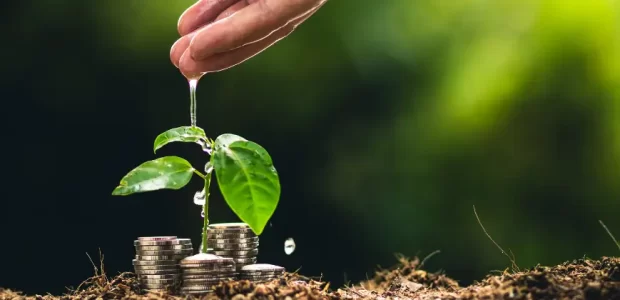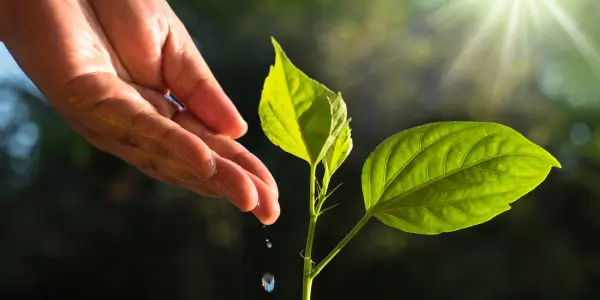
Saving Water in the Garden: Practical Tips

Water used outdoors, especially in hot and dry weather can exceed usage limits. Also, it is not uncommon to face drought or hose pipe ban in unpredictable weather. Water saving thus becomes essential. Being aware of water conservation techniques for gardening can save you a substantial amount of water for other uses while protecting your plants.
Read on to find out how you can make the most of plant care with less water.
Install Water Butt to Save Rainwater
Collecting water from the roof is an effective method to save water. You can use the water not only for the garden but also for washing your car and windows. Install a water butt to collect the maximum amount of water for your plants.
Using rainwater for plants is more beneficial as it is chemical-free and responsible for fostering plant growth. You can install as many as per your need and they prove to be invaluable during dry spells. This is an eco-friendly practice that also contributes to long-term environmental conservation.
Using Grey Water in the Garden
Grey water that comes from sinks plus showers can be used for gardening instead of wasting it. It is recommended to use grey water for no edible plants. Also, do not pour hot water directly into plants. Make sure it is cool and avoid using it on root vegetables that can be consumed directly.
Use Water Storing Crystals
Water-retaining crystals have emerged as an innovative technique to help you store water for plants. You don’t have to water the plants more often when you use the crystals. They absorb large amounts of water plus slowly release it as the soil dries out.
The water-storing crystals also provide additional benefits. They help improve soil structure and help roots to grow freely. Furthermore, by providing constant moisture, they lead to better healthy plant growth.
There is a variety of options available on Amazon for you to buy.

Water Less Frequently
This might sound unhealthy for plants but is useful for plants to grow their deep root systems. This also makes the plants drought-resilient. A good water soak after 10 days will be sufficient for plants to grow without any signs of decay.
While watering with long breaks make sure the soil is soaked to a depth of several inches. This way the soil will maintain moisture for a longer time. It further helps the roots to grow deeper.
Mulching
You can prevent the evaporation of plants by mulching soil with bark. This also provides the benefit of preventing weed growth that often takes up the nutrients of your plants.
Organic mulches also help the soil to improve its structure. Also, the mulches around your plant can serve as a protective barrier also moderating soil temperature.
Using Water Saving Nozzles
Using water saving nozzles for watering proves to be an efficient method for water conservation. These nozzles reduce the airflow while maintaining adequate pressure. By producing a fine mist the nozzles allow for a more even distribution of water.
Installing the nozzles in the garden is a cost effective step toward more sustainable gardening practices. You can find a great variety of nozzles on Amazon.

Reducing Lawn Areas
Reducing lawn areas is a smart way to save water. Lawns need a lot of water to stay green. By shrinking your lawn you are choosing to use less water. This helps the environment and lowers your water bill. Replace some lawn with plants that need less water. Try using native plants, which are better for your area. You can also add mulch or rocks to your garden. These options need little to no water.
Less lawn also means less mowing. This saves time and energy. Plus, it reduces pollution from lawnmowers. Creating flower beds or vegetable gardens can make your yard look more interesting. It also gives you fresh produce. Start small and reduce a little bit at a time.
Additional Tips
- Install drip irrigation to deliver water directly to plant roots.
- Set up rain barrels to store rainwater for garden use.
- Group plants with similar water needs together.
- Improve soil with compost to retain more moisture.
- Water plants early in the morning or late in the evening to reduce evaporation.
- Regularly inspect hoses plus irrigation systems for leaks.
- Use shade cloths or plant shade trees to reduce water loss.
- Water plants with cans instead of hoses to control water use.
- Reduce wind evaporation by installing fences.
- Use sprinklers that minimize water waste plus cover only the necessary areas.
Conclusion
Embracing water conservation in your garden is not just a necessity during droughts. It is a smart sustainable practice that benefits your garden plus the environment.
By implementing methods like installing water butts plus using grey water wisely along with opting for water-storing crystals you not only save water but also encourage healthier plant growth. Techniques like mulching plus using water saving nozzles further enhance efficiency helping you maintain a lush garden without excess water use.
